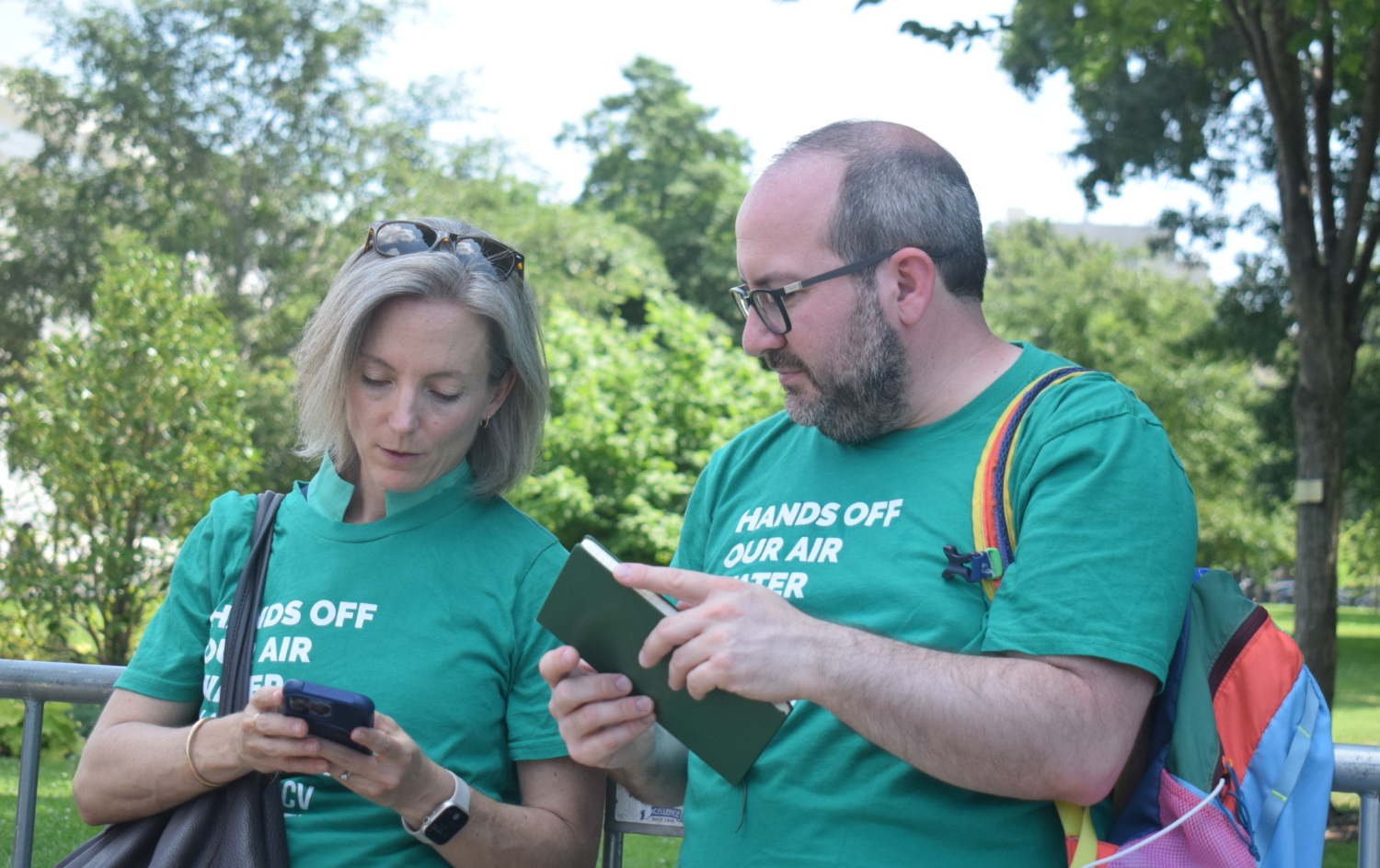
Republicans passed their bad “Big Beautiful Bill.” Here are the ugly impacts we’ll see on clean energy, electricity costs, the environment and more.
Jul 10, 2025
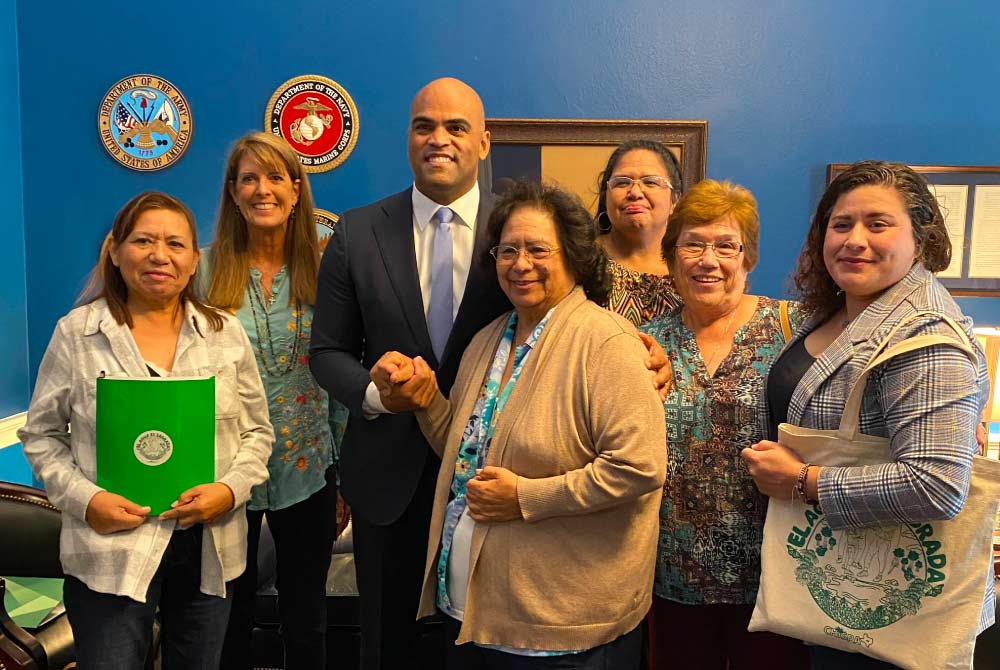 LCV staff from Chispa Texas and our partners meet with U.S. Rep. Allred during a fly-in event on LNG
LCV staff from Chispa Texas and our partners meet with U.S. Rep. Allred during a fly-in event on LNG
For far too long, the environmental movement has been largely focused on the concerns of White communities. Black communities and other communities of color have been exploited and disproportionately harmed by environmental hazards and climate change — resulting in higher rates of asthma and other debilitating illnesses, contaminated soil and water, displacement from homes and communities, and job loss.
Because of systemic racism, the environmental movement will not achieve meaningful climate action without centering racial justice and equity in our work. LCV does this by partnering with local communities on priority issues, working to protect and strengthen our nation’s democracy so that everyone has a voice in shaping the policies that affect them, and helping to elect diverse climate and democracy champions so that the people influencing environmental policy are reflective of their communities.
We know that we’re not perfect, and we’re committed to continually improving how we build our partnerships, shape policies, and hold leaders accountable to advance environmental justice. You’ll find examples of our progress throughout this month’s Top 5 stories below.

Living near a liquefied methane gas (LNG) export terminal is hazardous to your health. LNG terminals expose people living nearby to a multitude of airborne toxins that contribute to decreases in blood oxygen levels, lung damage, asthma, and heart attacks.
Marginalized and disadvantaged communities, especially communities of color, bear the brunt of these hazards due to the proximity of LNG terminals to their homes, businesses, parks, and schools. In addition to long-term negative health effects, people living in these communities regularly endure headaches caused by noxious gases, rattling windows, and near constant noise.
Until recently, the oil and gas industries had been getting a free pass to decimate frontline communities and destroy our chances of reaching our emissions reduction targets. But that changed a few weeks ago when the Biden-Harris administration paused pending approvals of LNG export projects. The pause is intended to allow time for the Energy Department to take a deeper look at all of the impacts that LNG exports have on communities and our climate — and to determine whether they are in the public interest.
The decision was a major win for frontline communities and for climate action — and an important step toward ending dangerous fossil fuel expansion. LNG isn’t simply more of the same climate-destroying gas in liquid form. Rather, it’s worse than ordinary gas due to the energy needed to chill, ship, and regasify the fossil fuel. These processes are far more carbon intensive and increase the potential for dangerous methane leaks.
President Biden noted that the pause on LNG exports was largely attributable to the “young people and frontline communities who are using their voices to demand action from those with the power to act.” Among those who are also widely credited for this victory is LCV Chispa Texas Program Director Elida Castillo, who was recently featured in an article on this topic in Mother Jones.
LCV, Castillo, and our Chispa Texas program have been working on many fronts to drive this victory. Chispa Texas ramped up its campaign after an LNG facility in Gregory, Texas announced plans for expansion in 2022 following the invasion of Ukraine. Chispa Texas staff, promotores (leaders), and volunteers organized and mobilized dozens of community members who:
Castillo has been leading the charge on LNG issues since 2021, and said, “We thank the Biden-Harris administration for listening to our communities experiencing the devastating impacts of massive oil and gas exports firsthand. This is a hopeful and critical step forward to prioritize people over polluters for our future generations and our communities along the Gulf coast.” Get the facts about LNG exports, costs to consumers, and public health.

Diesel fuel is a known deadly carcinogen. And yet, every day in the U.S., 20 million children ride to and from school on dirty diesel buses, causing an array of issues, including worsened asthma, increased risk of cancer, increased school absences due to related health challenges, and resulting lowered academic performance. Children in Black and Latinx communities, as well as low-income communities, are more frequently exposed to diesel pollution because they are more likely to ride the bus to school — and they are disproportionately hospitalized and die from asthma.
Since 2016, LCV’s Chispa program has been successfully working in partnership with more than 30 organizations to transition our nation’s 480,000 diesel school buses to a clean, electric fleet by mobilizing concerned families and communities.
To date, Chispa has secured a total of $5 billion in federal funding to replace dirty diesel buses — doubling the number of electric buses in use since 2022, decreasing toxic diesel exposure for millions of children, and reducing CO2 emissions. Chispa is also working to make sure these funds are distributed equitably and working with school districts and other stakeholders to apply for electric bus funding.
Last month, the Environmental Protection Agency (EPA) announced the 2023 grant recipients, awarding nearly $1 billion in Clean School Bus Program grants. This year’s grant highlights include:
Chispa programs in five states are actively working for an equitable transition to an all-electric school bus fleet centered on the communities most impacted by diesel pollution. To secure continual federal investments in clean buses, Chispa uses a range of tactics, including recruiting and training community leaders, canvassing, phone banking, house parties, lobbying, and providing stakeholders with support for obtaining clean school bus grant funding.
These tactics work. For example, due to overwhelming community demand for clean buses, EPA doubled its initial offering of funding from $400 million to $965 million. The grants announced last month will add to the thousands of clean school buses already in use across the country, providing the following benefits to communities:
Chispa is committed to ensuring that the benefits of electric buses and other clean energy advancements reach the people who need them most, especially low-income students, students of color, and school transportation workers who breathe the dirtiest air.
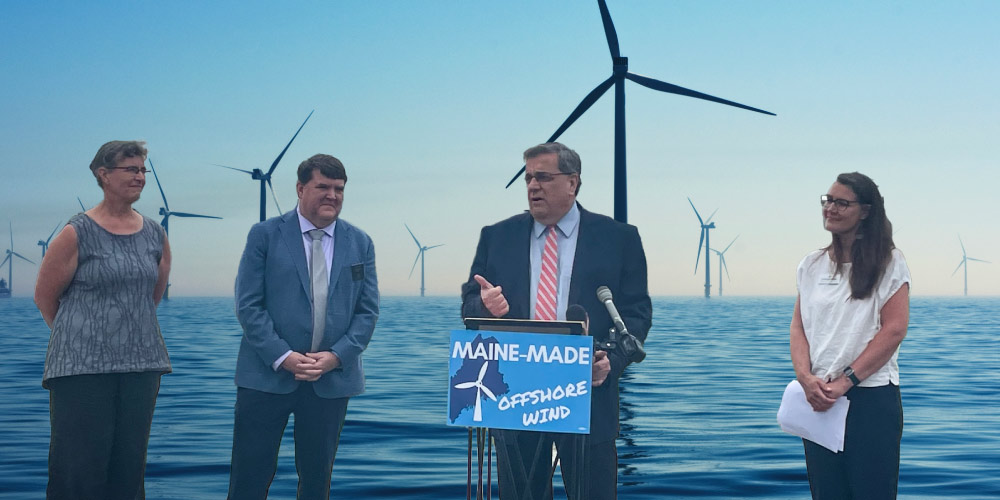
To combat climate change, the transition to clean energy is critical. To this end, LCV’s New England state affiliates in the Conservation Voters Movement (CVM) — Massachusetts, Maine, Connecticut, New Hampshire, and Vermont — helped found the New England for Offshore Wind coalition. This powerful coalition, led by LCV affiliate the Environmental League of Massachusetts, includes over 100 organizations representing environmental groups, labor unions, educational institutions and businesses, and is a driving force to advance the responsible and equitable development of offshore wind power in the region.
New England provides an extraordinary opportunity to harness wind power, with winds that are stronger than almost any in the world — capable of providing enough energy to power every home and business in the region ten times over.
To harness this energy, the New England for Offshore Wind coalition has launched a movement, uniting environmental groups, labor unions, fisheries, businesses, and other community stakeholders.
Together, coalition members are shaping healthy and sustainable clean energy policies that bring benefits to local communities and build a strong green economy. These policies center the communities that have been historically underserved and overburdened by energy pollution and are most vulnerable to the negative effects of the climate crisis, including communities of color and low-income communities.
The disproportionate impact of burning fossil fuels is a serious health threat, so much so that several leading hospital systems in New England have endorsed offshore wind to help preserve public health. Offshore wind in the region has the potential to eliminate 100 million metric tons of carbon dioxide emissions each year, equivalent to taking 20 million gas-powered cars off the road.
Harnessing New England’s offshore wind energy will bring in billions of dollars in investment and create tens of thousands of good-paying jobs in construction, operations, maintenance, and in the region’s ports — thanks to federal investments in clean energy included in the Inflation Reduction Act and the Infrastructure Investment and Jobs Act.
In January, the New England for Offshore Wind coalition celebrated the start of power generation at the Vineyard Wind 1 offshore wind project. When completed later this year, Vineyard Wind 1 will be one of the country’s first commercial-scale operational offshore wind projects, with 62 turbines and the capacity to power about 400,000 homes.
The New England for Offshore Wind coalition’s success is an excellent example of how LCV’s leadership, coalition building, and partnerships with the 30+ state affiliates in the CVM are making a significant contribution to addressing climate change. Read about our other successes in states across the country.
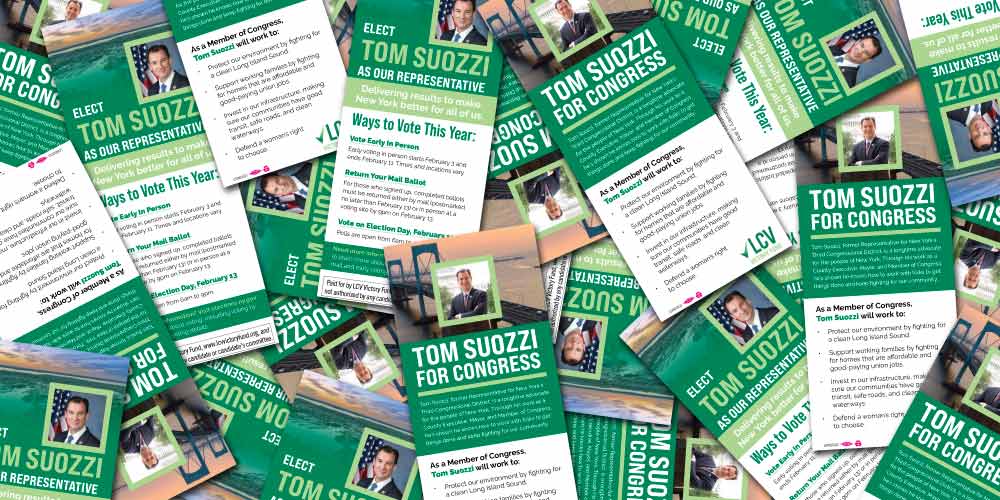
On February 13, Tom Suozzi won a seat in the U.S. House of Representatives. His victory in the special election in New York’s 3rd Congressional District to replace disgraced and expelled former Congressman George Santos brings Democrats one seat closer to winning a majority in November.
LCV Victory Fund (LCVVF) is proud to have gone all in to help flip this seat — hopefully just the first of many House seats we’ll win this year. We didn’t just win this race decisively; we also used it as an opportunity to innovate and test approaches we’ll use to support pro-climate and pro-democracy candidates across the country this year.
Here are three key takeaways from the race that will inform our upcoming work:
To support Suozzi’s victory, LCVVF placed advertisements, and LCVVF field programs knocked on over 91,700 doors and had conversations with over 12,600 voters. Suozzi carried the area where we worked by 10% more than the Democratic candidate in 2022.
Suozzi has a long history of environmental leadership in New York. During his previous time in Congress, he earned an impressive 98% lifetime score on the LCV National Environmental Scorecard. In addition to supporting the Inflation Reduction Act and its historic investments in clean energy and environmental justice, Suozzi also voted in favor of Washington D.C. statehood, updating the Voting Rights Act, removing Confederate statues from the U.S. Capitol, and protecting frontline communities from a wide range of toxic chemicals. Suozzi also served as mayor of Glen Cove and as Nassau County Executive and was the 2008 New York League of Conservation Voters’ Environmentalist of the Year. Read more about LCVVF’s takeaways from this special election.
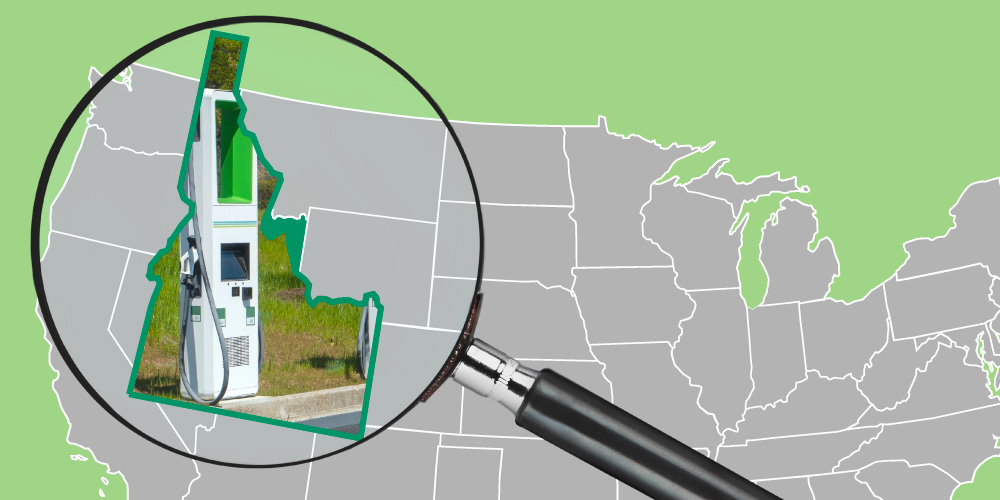
Between 2011 and 2021, the number of electric vehicles (EVs) in the U.S. rose from about 22,000 to just over 2 million, according to the Bureau of Labor Statistics. As the popularity of EVs continues to rise, so does the need for accessible EV charging stations.
The National Renewable Energy Lab estimates that by 2030 we will need about 1.2 million publicly accessible charging units to meet our EV charging needs, and these public chargers will be all the more important for low- to moderate-income residents of multi-family housing. Tens of billions of federal dollars for EV charging stations have already been announced — putting the U.S. on track to meet these investment needs and support our goal of achieving net-zero emissions by 2050 — thanks to funding included in the Infrastructure Investment and Jobs Act and tax incentives in the Inflation Reduction Act.
One of many communities making use of these federal investments is Boise, Idaho. Mayor Lauren McLean has been spearheading the city’s transition to clean energy since she was elected the city’s first woman mayor in 2019. In her first term, she led the charge to approve the city’s Climate Action Roadmap, which targets achieving carbon neutrality for the city by 2050.
In 2023, McLean was reelected with significant help from our state affiliate, Conservation Voters for Idaho Action Fund — which raised more than $518,000 as part of its independent expenditure campaign. Her victory was a clear rebuke of the anti-climate rhetoric from her well-funded opponent who vowed to roll back the climate policies she championed. Now, she’s actively protecting and expanding climate action in the fifth-fastest-growing city in the U.S.
Last month, McLean announced that Boise will soon be installing EV charging infrastructure throughout the city, thanks to a $3.2 million grant awarded as part of the latest round of federal clean energy investments. The funds will be used to install roughly 100 charging ports across 20 Boise sites. The Boise project is one of 47 federally funded EV charging projects, spanning 22 states and Puerto Rico, which total $623 million in recent federal investments in EV charging infrastructure.
The clean energy progress being made in Boise provides a great example of LCV’s theory of change at work. To advance climate action, we use a multi-pronged approach, including working with our state affiliates to help elect climate champions like McLean and build local power, and mobilizing constituents to advocate for federal clean energy investments like those funding Boise’s EV chargers.
— Chispa Texas Program Director Elida Castillo, applauding the Biden administration’s decision to pause LNG expansion